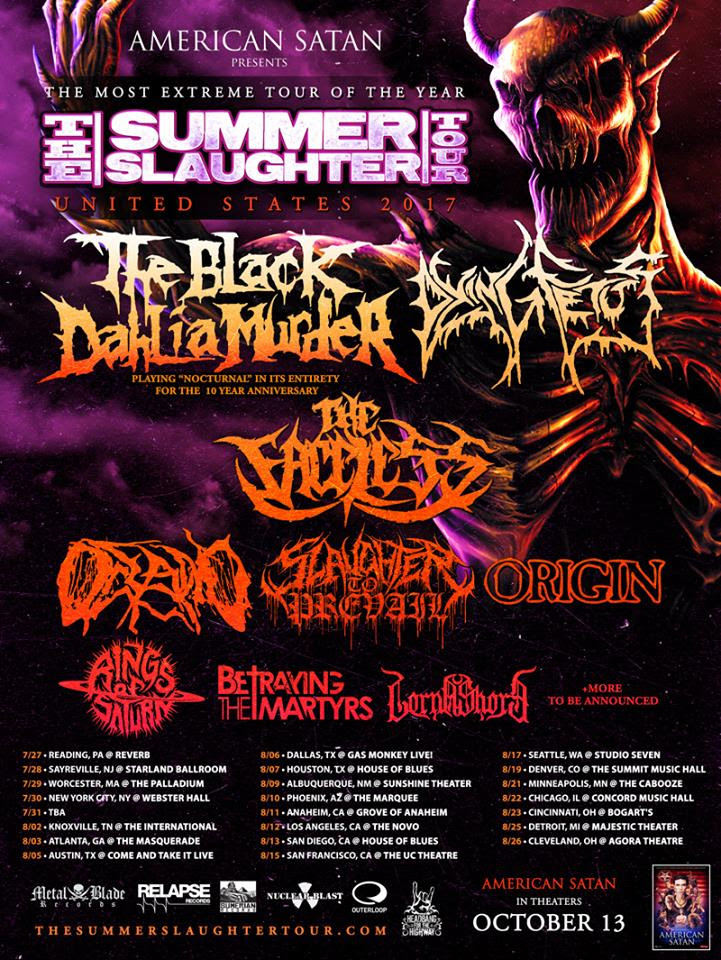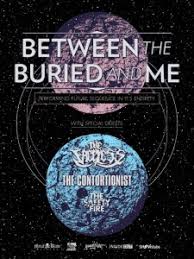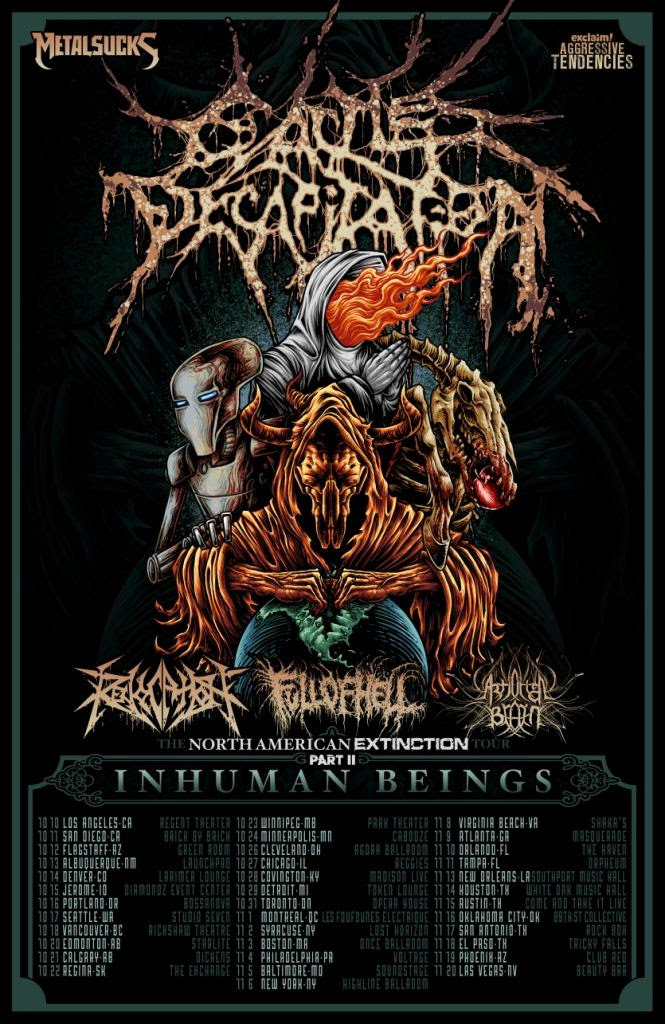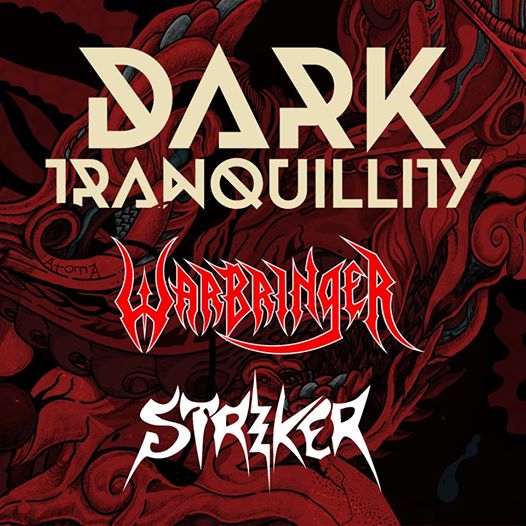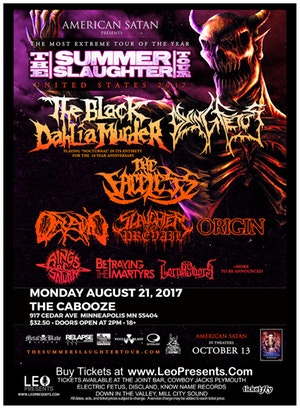Heavy Metal Causes Mental Illness - My Rebuttal
 Yesterday the interwebs were in an uproar. The Herald Sun out of Australia posted a report that teens listening to heavy metal were at a higher risk of depression and suicide. The study was done by Dr. Katrina McFerran from The Melbourne University. I was a little shocked by this and contacted the studies author who got back with me with some added information. I am not one to challenge science, but I am one that will challenge methods used when obtaining science.
Yesterday the interwebs were in an uproar. The Herald Sun out of Australia posted a report that teens listening to heavy metal were at a higher risk of depression and suicide. The study was done by Dr. Katrina McFerran from The Melbourne University. I was a little shocked by this and contacted the studies author who got back with me with some added information. I am not one to challenge science, but I am one that will challenge methods used when obtaining science. Dr. McFerran was kind enough to share her study with me and we discussed a bit of the process used to obtain her results. She also mentioned that the study was done with a very small field using only a single city in Australia. This was just a pilot study to see if a larger study was warranted on a much larger scale as Dr. McFerran explained.
While reading the study, some things immediately jumped out at me regarding the scientific method used to reach the results and conclusion. The first being that 62% of the study participants were male. We have all been to metal shows and know that metal is dominated by males between 15 and 16 years of age. 15 to 16 is also an important age in a guys life. One generally starts high school around 15. Dr. McFerran cites Frith’s 1981 paper that states “the most common sociological explanation of the importance of music for youth is in terms of peer-group culture and how music provides the security and identification with other like-minded peers.” The problem is, Frith stated this in 1981 before Steve Jobs and Apple took music from being something you shared socially to something you did alone on your iPhone. (Larson, 1995) "A synchronized music consumption among people in physical proximity, as it happens in clubs or during parties, can create a strong emotional connection, more than what an asynchronous download of music over distance could provide." With heavy metal not being the most popular form of music, unless you are from Scandanavia, it is more difficult to find other metal fans to bond with. Social interaction is important to an adolescent, the problem is many fifteen and sixteen year old teens are unable to get to a show to have this social interaction amongst other metal fans. If one was into pop or R&B music that has a much broader fan base, finding like minded friends would be easier.
When I was growing up, my older stepbrother introduced me to heavy metal. I saw him for one weekend a month and he was my only metal friend for many years. Other than that, I was on my own. I still had friends, but when they wanted to listen to the new Duran Duran album or Michael Jackson’s ‘Thriller,’ it became time for me to leave. It wasn’t that I was suicidal or depressive, I just didn’t care to listen to that type of music and often retreated to my room. It was hard as it did lead to more and more solitude, but it wasn’t the Judas Priest or Iron Maiden lyrics doing it, it was being a seven year old with no heavy metal peers around. My mother looked at me listening to my vinyl alone sitting on my bed and thought I had issues. The PMRC was just gaining national media attention and my mom bought into the hype; I was listening to the devils music and was bound to kill myself. I never had any such thoughts from metal for the near thirty years I have been listening. The problem wasn't the music, but not enough people around me were into it. Those weekends at my dads house each month were filled with social involvement solely around and because of heavy metal.
As part of the scientific method used, 15-18 year old teens were asked a series of questions. When they got to music choices, they were given the following categories: R&B, dance, hip-hop, rock, alternative, punk and metal. If one was to break up R&B, dance, and hip-hop into separate categories and rock, punk and alternative into three separate categories, why not break heavy metal into three categories also? As it turns out, goth and emo/screamo were all considered ‘metal’ for the purposes of the study. You can ask any metal fan, they like certain sub genres of metal and hate others. With this division of categories and no division of metal into three sub-categories, you’d expect higher results for heavy metal as it pertains to high risk individuals and depression. And sure enough, across the board, heavy metal dominates and they conclude that it leads leads to depression (Figure 6 from study)
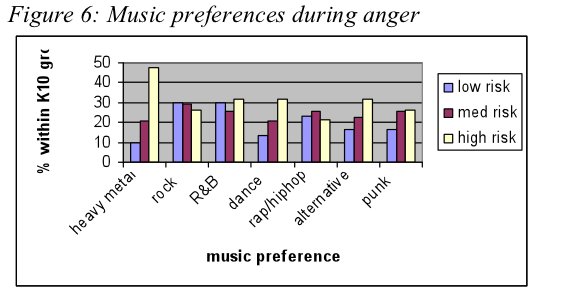
As the study is mainly concerned with the ‘high risk’ for depression and suicide and other mental illnesses, we will now re-plot the graph. I will also leave gothic music in heavy metal even though it is an offshoot of punk which we are considering rock now. The new graph below leaves all forms of heavy metal and has a 47%, R&B, rap, hip-hop and dance move to a 79% and rock, alternative and punk take 83%.

I brought this up with Dr. McFerran and she said she will pay closer attention to the genres and sub-genres with the full study due to be completed in 2 years.
The study also states that “102 (of 111) students confirmed that music listening made them feel better, with very few participants rating themselves as feeling worse after listening in any mood.” The study concluded that “While the majority of heavy metal listeners did report improved moods, it is still important to acknowledge the vulnerable minority of heavy metal listeners who reported worse moods.”
(Stack and Gundlach, 1992) have suggested that there is a “strong link between country music and metropolitan suicide rates for whites.” Why this study didn’t include country music is beyond me. But this goes towards my theory that heavy metal fans might experience the same traits as white country music fans in the big city. There are few and far between which causes a lack of a positive social network. It isn’t the music or lyrics, but the lack of others to enjoy it with. Stack and Gundlach researched the alienation whites living in metropolitan areas suffered from if they enjoyed country music. Like country music, heavy metal is a lifestyle. Metal fans might not wear a cowboy hat, but they can often be recognized.
Another factor brought up is Stack’s (1998) suggestion that “non-religious people are more at risk of suicidal thoughts” or in the case of the study, a higher rick for psychological distress. Heavy metal fans are typically not god fearing. Metal lyrics have long preached the woes of religion. Not believing in god, or a god, might increase suicide for various reasons, but heavy metal shouldn’t be blamed for pointing out the facts and hypocrisies of religion. That’s like blaming the science teacher for your sons suicide because he was taught evolution. It’s not the teachers fault, he’s just speaking proven science.
Geography plays a huge role in the study. As the study cites numerous links between social behaviour and depression, I would assume geography would play a large part in the results. If the same study were conducted in Finland where listening to metal is a national past-time, you’d expect metal fans to be more widely accepted by peers and suicide rates to be lower even with the links to religion mostly absent.
In summary, many of the conclusions reported were premature as further study will be ongoing and results won’t be ready for at least another two years. With the segmenting of the musical genres, they will see heavy metal is music, and like other forms of music it is just that and not a gateway to depression.
Read More News
Tags: heavy metal, science, illness, suicide
Jason Fisher October 21, 2011


